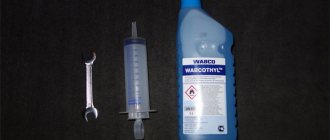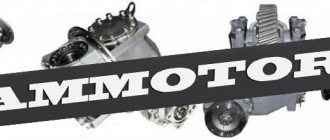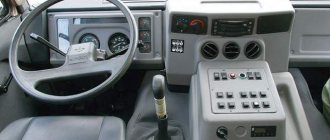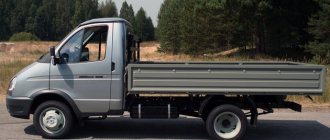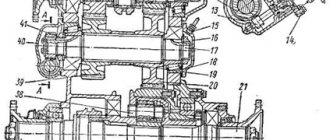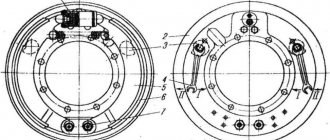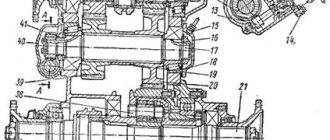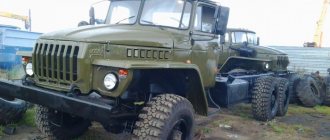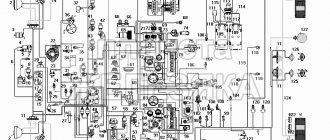This universal-use vehicle is designed for both transporting people and transporting goods. Professional cargo carriers quickly appreciated the Ural 4320; the technical characteristics of this vehicle were excellent. This SUV appeared in 1977 and immediately gained popularity due to its excellent cross-country ability.
On the Internet you can find footage of how the Ural 4320 moves in the mud; videos of this kind clearly demonstrate its impressive driving characteristics. In fact, this vehicle is a civilian modification of the Ural 375 truck, which was produced for military needs since 1961. It is not surprising that the carrying capacity of the Ural 4320 in conditions of not very reliable road surfaces or even complete off-road conditions is quite high.
Of course, the design of this car is not particularly sophisticated; moreover, in its case, we are more likely talking about the structure rather than the design. However, if you look closely at the moving Ural 4320 (video at the end of the article or, even more so, in real life), then you cannot help but find its stern grace in it.
Ural 5557: technical specifications, electrical diagram (photo, video, price).
Technical characteristics and descriptions of Kraz 255 models are here.
For the KamAZ 5320 instrument panel, see the article.
Cross-country ability
This brand is able to overcome obstacles that would baffle many of its analogues.
Shallow water barriers will not block her path, and she can easily climb to a very significant height. Table 1 - Indicators of cross-country ability of the Urals 4320
| Fordable river depth | 1.5 meters |
| Depth of swampy terrain to be traversed | 1.5 meters |
| Ditch depth | 2 meters |
| Climb | 60% |
| Highest accessible point above sea level | 4650 meters |
| Smallest turning radius, | 11.4 meters |
How many liters of oil should be poured into the Ural box?
Changing the oil in the transfer case of the Ural 4320 involves pouring new fluid into the hole on the right of the quarry. The plug has a current level indicator. A baffle is placed inside the crankcase; oil will drain from a pair of holes. There is a magnet in the front box to catch iron dust. To drain the waste, you need to unscrew the plug on the side, then do the same with the bottom.
Important! The magnet on the plug must be cleaned during maintenance.
When the stream turns into droplets, the procedure can be considered complete
How much oil is in a box of Ural 4320
For servicing the Ural gearbox, the standard oil volume is 3.5-4 liters. If you need to flush the system, take the transmission with a reserve.
Modifications
There are many varieties of Ural 4320, photos available on the Internet give a general idea of their features. These include:
- Ural 4320-01 produced in 1986 with an improved cabin, platform, and gearbox compared to the original version;
- Ural 4320-10 1993 with a six-cylinder engine from the Yaroslavl plant with a capacity of 180 hp. With.;
- Ural 4320-31 1994 with an eight-cylinder engine from the same manufacturer producing 240 hp. With. has an improved power density parameter;
- Ural 4320-30 with a long wheelbase and increased load capacity;
- Ural 4320-41 with a YaMZ-236NE2 engine produced in 2002, which complies with Euro-2 standards and has a power rating of 230 horsepower;
- Ural 4320-40 - version of the previous one with a long wheelbase;
- Ural 4320-44 2009 — option 4320-41, equipped with a luxury cabin;
- Ural 4320-45 - long-wheelbase version of the previous one;
- Ural 4320-48 with YaMZ-7601 engine is a model designed for installation of special equipment.
Thus, the engine power varied significantly among various modifications of the Ural 4320.
Of particular importance was the appearance in 2009 of a new version of the Ural, equipped with a luxury cabin. It is equipped with a fiberglass hood and a distinctive stylish tail. Since that time, the manufacturing company has been taking care not only of the off-road qualities of the brand, but also of the amenities for those in the cabin, which were not previously given the closest attention.
Components of the main engine systems of the Ural-4320 car
Components of the main engine systems of the Ural-4320 car
Power supply system (fuel system) of the Ural-4320, 5557 (YaMZ-236) engine
Fuel from the main fuel tank 1 (Fig. 1) is sucked in by the fuel priming pump 8 and through the coarse 22 and fine 13 filters it is supplied to the high-pressure fuel pump (HPF) 10.
Rice. 1. Diagram of the fuel system of the YaMZ-236NE2 engine of the Ural-4320, 5557
1-main fuel tank; 2,6,14,15,17,19,23 - fuel drain lines; 3-hose for draining fuel; 4-fuel drain valve; 5-tank additional fuel; 7-manual fuel priming pump; 8-low pressure fuel priming pump; 9-nozzle; 10-high pressure fuel pump; 11,12,21,24 - low pressure fuel lines; 13-fine fuel filter; 16-fuel tank pre-heater; 18-high pressure fuel lines; 20-speed controller; 22-coarse fuel filter; 25-fuel intake; a-fuel supply; b-fuel drain
The pump supplies fuel through tubes to the injectors, which inject fuel into the cylinders of the Ural-4320, 5557 engine in accordance with their operating order.
Excess fuel, and along with it the air that has entered the system, is discharged through the fine filter nozzle valve through fuel lines 15 and 17 into the fuel tank.
The fuel that has leaked through the precision parts of the injectors through pipelines 6 and 23 is also discharged into the fuel tank.
The amount of fuel in the main fuel tank is measured by an electrical level sensor installed in the tank and monitored by a gauge on the instrument panel.
Fuel supply control drive of the YaMZ-236NE2 engine of the Ural-4320, 5557 vehicle
The fuel supply control drive of the Ural-4320, 5557 engine is mechanical and consists of a pedal, rods, levers, as well as a mechanism for manual fuel supply and engine stop.
When the pedal is in a free position, the control lever should rest against the bolt for limiting the minimum rotation speed on the injection pump regulator; this is ensured by adjusting the length of rod 2 (Fig. 2).
Rice. 2. Fuel supply control drive of the YaMZ-236 HE2 engine of the Ural-4320, 5557
1-fuel control shaft lever; 2-thrust; 3-fuel control lever; 4-cable strand clamp; 5-lever manual drive; 6-rod manual control; 7-traction handle; 8-pedal; 9-seal; 10-bolt adjustment; I-pedal position when the engine is running at minimum idle speed; II - pedal position when the engine is running at maximum speed and maximum power; a, b-gaps
When the pedal is fully pressed, the gap “b” should be 2-3 mm at maximum speed.
When adjusting the manual fuel supply drive, the rod 6 must be moved until the handle 7 stops in the panel and a gap “a” must be provided between the manual drive lever 5 and the cable strand clamp 4 within 2-3 mm.
Rice. 3. Drive for manual engine stop of Ural-4320, 5557 vehicles
1-pneumatic cylinder; 2-pneumatic cylinder lever; 3-return spring of the stop lever; 4-handle traction; 5-stop rod; 6-cable clamp; 7-stop lever; a-gap
To stop a running Ural-4320 engine, you need to pull handle 4 (Fig. 3) towards you until it stops.
When adjusting the stop drive, it is necessary to move handle 4 all the way into the panel and ensure a gap “a” between stop lever 7 and cable clamp 6 within 2-3 mm.
Air filter of the YaMZ-236NE2 engine of the Ural-4320, 5557
The air supply system for the Ural-4320, 5557 (YaMZ-236 HE2) engine consists of an air filter, supply pipelines, connecting hoses and fastening parts.
The air filter is located on the right fender using brackets and clamps.
The supply lines are located on the engine.
A technological mesh with a sealing gasket is installed between the nozzle and the connecting pipe of the intake manifolds, which must be removed after running in the engine, leaving the sealing gasket.
Air is supplied to the air filter through the air intake pipe.
The air entering the filter, passing through the swirler, acquires rotational motion in the annular gap between the housing and the filter element; due to the action of centrifugal forces, dust particles are thrown towards the wall of the housing and collected in the hopper through a gap in the partition.
The pre-cleaned air then passes through the filter element, where it is finally cleaned.
In order to increase the service life of the filter element, a pre-cleaner in the form of a stocking made of non-woven material is installed on its outer surface.
The need to service the air filter of the Ural-4320, 5557 (YaMZ-236NE2) engine is determined by the clogging indicator located in the cabin.
During maintenance, dust is removed from the hopper, the pre-cleaner and filter element are cleaned.
To service the air filter of the Ural-4320, 5557 engine, unfasten the four latches and remove the cover, unscrew the nut securing the filter element and remove the cardboard filter element.
Untie the tape and remove the pre-cleaner.
Remove the plastic air swirler from the housing.
Inspect the filter element.
Plaque on the inside of the element indicates a leak in the element or sealing gaskets; in this case, replace it.
Wash the plastic swirl removed from the air filter housing with hot water.
If it is necessary to wash the air filter housing of the YaMZ-236 HE2 engine of the Ural-4320, 5557, remove it, rinse with hot water and dry.
Clean the pre-cleaner from dust by shaking or blowing with dry compressed air.
Having discovered after inspection that there is no soot or soot on the cardboard filter element (the element is gray), and the element itself has no mechanical damage, blow it with dry compressed air until the dust is completely removed.
To avoid cardboard breakthrough, the compressed air pressure should be no more than 200-300 kPa (2-3 kgf/cm2).
Direct the air stream at an angle to the surface, adjust the force of the stream by changing the distance of the hose from the element.
If there is soot, oil on the cardboard or blowing with compressed air is ineffective, rinse the element in warm water (40-50 °C) with a detergent dissolved in it.
Immerse the element in this solution for half an hour, and then vigorously rotate or bathe it for 10-15 minutes.
After rinsing in the solution, rinse the element in clean water and dry.
After each maintenance of an element or when installing a new one, check its condition visually by illuminating it with a lamp.
In case of mechanical damage, ruptures of corrugations, peeling of cardboard, replace the element.
When assembling the air filter of the YaMZ-236 HE2 engine of the Ural-4320, 5557 vehicle, check the quality of the seal by looking at the continuous imprint on the gasket.
The estimated service life of the filter element is 30,000 km.
Excessively frequent cleaning of the filter element reduces its service life, since the total number of element maintenance is limited (5-7 times, including washing no more than three times) due to possible destruction of the cardboard.
After performing maintenance on the air filter, return the indicator drum to the operating position.
Engine gas exhaust system for Ural-4320, 5557 vehicles
The gas exhaust system of the Ural-4320, 5557 engine is designed to remove exhaust gases and reduce exhaust noise.
Rice. 4. Gas exhaust system of the YaMZ-236NE2 engine of the Ural-4320, 5557
1-reception pipes; 2-auxiliary brake; 3-compensators; 4-muffler; 5-pipe exhaust
Installation and operational displacements of the intake pipes relative to the muffler are perceived by compensators 3 (Fig. 4).
Reliable operation of compensators is ensured by the location of their axes in the same plane.
This is achieved by turning the muffler 4.
Engine cooling system YaMZ-236 NE2 for Ural-4320, 5557
The cooling system of the YaMZ-236NE2 engine of the Ural-4320, 5557 is liquid, closed, with forced circulation of coolant, designed for the use of low-freezing coolants (Fig. 5).
Rice. 5. Diagram of the cooling system of the YaMZ-236NE2 engine of the Ural-4320, 5557
1-radiator; 2-filler neck with radiator cap; 3-casing; 4-fan; 5-drainage hose; 6-bypass hose to the expansion tank; 7-thermostat box; 8-expansion tank; 9-expansion tank plug; 10-drain tap; 11-water supply pipeline; 12-frame with curtain; a-discharge of coolant from the compressor; b-coolant supply to the compressor
At ambient temperatures down to minus 40 °C, use coolants OZH-40, TOSOL-A40M.
At a temperature of 20 °C, the density of coolant OZh-40 should be 1.075-1.085 g/cm3, TOSOL-A40M - 1.078-1.085 g/cm3.
At air temperatures of minus 40 °C and below, use coolants OZH-65 or TOSOL-A65M.
At a temperature of 20 °C, the density of OZH-65 coolants should be 1.085-1.100 g/cm3, TOSOL-A65M - 1.085-1.095 g/cm3.
Water may be used in case of sudden loss of coolant.
As soon as possible, drain the water and fill with low-freezing liquid.
The temperature of the coolant in the cooling system should be within 75-100 °C.
The radiator of the Ural-4320, 5557 (YaMZ-236 HE2) engine is a tubular-tape, four-row.
A sealed plug equipped with two valves is installed on the filler neck of the upper radiator tank.
The exhaust valve opens at an excess pressure in the system of 65 kPa (0.65 kgf/cm2), releases excess liquid and steam into the expansion tank, the inlet valve opens at a vacuum of 1-1.2 kPa (0.01-0.012 kgf/cm2), allows fluid from the reservoir into the radiator.
The expansion tank of the Ural-4320, 5557 (YaMZ-236 HE2) engine is plastic, located on the bracket of the right side of the car hood, connected by a pipeline to the filler neck of the upper radiator tank.
The expansion tank serves to compensate for changes in the volume of coolant when it expands due to heating.
The temperature of the coolant in the cooling system is monitored by an indicator installed on the instrument panel.
The pointer sensor is installed in the drainage pipe.
When the temperature in the cooling system increases to 98 °C, the coolant overheat indicator lights up.
This signal warns that it is necessary to find out the cause of engine overheating and eliminate it.
When the warning light is on, in special cases, further movement is possible by carefully monitoring the coolant temperature gauge.
A short-term temperature increase of up to 105 °C, no more than 120 minutes, is allowed.
Adjust the tension of the water pump drive belts of the Ural-4320 (YaMZ-236NE2) engine in the following sequence:
– drain the water from the cooling system;
– disconnect the water supply pipeline from the water pump;
– Unscrew the nuts securing the side of the pulley, turning the pulley.
Remove one or two shims.
Place the spacers on the outer side of the sidewall and tighten the nuts sequentially, turning the pulley after tightening each nut.
Then check that the belt tension is correct.
When replacing an old belt with a new one, place all the spacers between the hub and the removable sidewall of the pulley and adjust the belt tension.
Checking the low-freeze coolant level
Due to changes in its volume at different temperatures, check the coolant level on a cold engine.
Fill the cooling system of a cold Ural-4320, 5557 (YaMZ-236 HE2) engine with coolant through the radiator filler neck.
When filling the system, the heater fill pipe plug and the heater tap must be open.
Before checking the fluid level, run the engine for 1-2 minutes to remove air from the system.
After stopping the Ural-4320, 5557 engine, add fluid if necessary.
When filling the radiator for the first time, pour 23 g of sealing powder NIISS-1 TU 38.10270-78 into the neck of the radiator.
After disassembling any connection of the Ural-4320, 5557 engine cooling system, add powder if necessary.
The water level in the Ural-4320, 5557 engine cooling system must be checked on a cold engine.
Fill the cooling system of the Ural-4320, 5557 (YaMZ-236NE2) engine with water through the radiator filler neck with the plugs of the heater fill pipe and the cabin heater tap open.
At temperatures below 0 °C, open the cabin heater valve only after the engine has warmed up and add water to the radiator to the upper edge of the radiator neck.
In the cold season, disconnect the connecting hose from the expansion tank and direct it downwards, securing the clamp under the fan casing bolt.
In warm weather, do not disconnect the hose from the tank.
To drain the coolant from the cooling system, place the car on a horizontal platform or tilted forward and open three taps located on the heater boiler, on the heater pump unit and on the water supply pipe of the water pump (on the right side along the vehicle).
In this case, the plugs of the radiator neck and the heater fill pipe must be open.
The volume of non-drainable coolant when the cabin heater tap is open is approximately 2 liters.
If water was used in the cooling system of the Ural-4320, 5557 (YaMZ-236 HE2) engine, then when draining it, do the following:
after draining the water from the cooling system and preheating, turn on the pump unit for 10-15 seconds to remove water from the pump to avoid freezing of the impeller, close all three drain valves after the water has completely drained;
After draining the water from the cooling system, do not close the radiator neck and the heater fill pipe with plugs, as they may freeze.
Do not start the engine after draining the coolant to remove its remnants from the system; this can lead to destruction of the rubber sealing rings of the cylinder liners, loss of valve seats, burnout and warping of the cylinder heads.
Suspension of the power unit of the Ural-4320, 5557 car
The power unit Ural-4320, 5557 is installed on four elastic supports: front, rear and two middle ones - left and right.
The front and middle supports are load-bearing.
Rice. 6. Suspension of the power unit Ural-4320, 5557
1-middle support pillow; 2-bracket for middle supports; 3-beam front support; 4-pillow of front and rear supports; 5-shock absorber front and rear supports; 6-bracket front and rear supports; 7-rear support bracket; 8-nut; 9-adjusting plates; 10-bolt; 11-beam rear support; 12-front support bracket; I-front support; II-middle supports; III-rear support
The rear support is supportive and is installed in the unloaded position using adjusting plates 9 (Fig. 6).
The front and rear supports of the Ural-4320, 5557 power unit are installed on beams 3 and 11, and the middle ones are mounted on brackets fixed to the vehicle frame.
The supports of the power unit are brackets 2,7,12.
The front support bracket 12 is attached to the front cover of the engine block, the 2 middle support brackets are attached to the flywheel housing, and the rear support bracket 7 is attached to the rear end of the gearbox.
The pillows of the middle supports 1 left and right are interchangeable with each other.
Pillows 4 and shock absorbers 5 of the front and rear supports are also interchangeable.
To install the rear support in an unloaded position, it is necessary to maintain a gap of 0-1 mm between the cushion 4 and the rear support bracket 7.
To do this, make adjustments in the following sequence:
– Unscrew the nuts 8 and remove the bolts 10.
– Remove shims 9.
– Measure the gap between bracket 7 and cushion 4.
– A gap of more than 1 mm must be eliminated by installing shims 9.
– Install bolts 10 and tighten nuts 8.
_________________________________________________________________________________________
_________________________________________________________________________________________
_________________________________________________________________________________________
_________________________________________________________________________________________
_________________________________________________________________________________________
_________________________________________________________________________________________
_________________________________________________________________________________________
_________________________________________________________________________________________
_________________________________________________________________________________________
spezz.ru
Characteristics
The Ural 4320 has a full range of parameters that make it an impeccable hard-working SUV.
Table 2 - Technical characteristics of Ural 4320
| engine's type | First, the diesel KamAZ740 V-shaped four-stroke. Then V-shaped four-stroke YaMZ 236 and YaMZ 238. |
| Number of cylinders | 8 (6 for YaMZ 236) |
| type of drive | All-wheel drive |
| Transmission | 5-speed |
| Synchronizers | In 2 3 4 5 gears |
| Transfer case | Two-stage |
| Wheel formula | 6 x 6 |
| Busbar type | Single-pitch |
| Front and rear overhangs | Short ones are placed high |
| Body | All metal |
| Power steering | Eat |
| Number of doors | 2 |
The Ural 4320 engine, which was first produced at Kamaz, began to be produced at the Yaroslavl Motor Plant in the 90s, the cause of which was a fire at Kamaz. The clutch of the Ural 4320 car belongs to the KamAZ-14 modification.
Maz 5336: technical characteristics, features and device (photo, video, price).
Full description of the Maz 5551 car on this page.
You will find out why it is so profitable to choose Hyundai Porter here.
Operation and Maintenance Manual
The operating instructions contain the following sections:
- Safety precautions that must be observed while working in the Urals.
- Description of the device and technical characteristics of the power unit, gearbox, chassis, steering, electrical equipment.
- Recommendations for running a car.
- Transport marking. This section tells you where to find the frame and engine numbers.
- Features of operation.
- Adjusting the clutch and pedal free play.
- Procedure and frequency of maintenance.
- Basic malfunctions and procedures during repairs.
- Conditions for storing and transporting the vehicle.
- Warranty period and coupon.
physical characteristics
The optimal wheel size of the Ural 4320, as well as its configuration, among other factors, provide increased maneuverability of this truck.
At the same time, the vehicle is capable of developing a maximum speed (85 km/h) or close to it with a load of up to 5 tons, both when traveling on the road and off-road. Table 3 - Physical characteristics and dimensions of the Ural 4320
| Length | 7366 mm |
| Width | 2500 mm |
| Cabin height | 2715 mm |
| Canopy height | 2870 mm |
| Weight without load | 8570 kg |
| Maximum trailer weight | 7000 kg |
| Front wheel track | 2000 mm |
| Rear wheel track | 2000 mm |
| Clearance | 400 |
| Number of seats in the cabin | 3 |
| Number of seats on the platform | 24 |
Acceptable conditions
This truck performs flawlessly in extreme conditions.
Both in cold weather and in bad weather, it is the Ural 4320 that can handle the transportation of goods; the design of this truck makes it minimally vulnerable to the elements. Table 4 - Permissible operating conditions for Ural 4320
| Garageless storage | Allowed |
| Acceptable temperature range | From –45 to +50 (short-term use in frosts down to –50 is possible) |
| Limit relative humidity | 98 % |
| Maximum dust content | 1.5 cu. G. |
| Highest wind speed | 20 m/s |
| The highest altitude at which stable operation is possible | 4500 m requires proper modification of traction and dynamic characteristics |
Table 5 - Main running parameters of the Ural 4320
| Fuel consumption combined cycle l/100 km | 27 |
| Range km Up to | 607 |
| Highest speed km/h | 85 |
| Braking distance at initial speed 40 km/h, m | 15 |
The range of the Ural 4320 truck is also very significant; the tank volume allows it to move many hundreds of kilometers without refueling.
Service
The car, as befits a product of this category, is as unpretentious as possible in maintenance; in this regard, it is significantly superior to its foreign analogues.
The instruction manual for the Ural 4320 is very detailed and written in accessible language. Simple car repairs are quite feasible in open areas. To repair electrical equipment, a legible Ural 4320 wiring diagram is required. If it is available, any qualified technician can handle the work. The connection diagram for the Ural 4320 generator must also be available for uninterrupted operation of the vehicle. If it is missing, difficulties may arise with the installation of this unit.
Cabin
The model is equipped with a metal two-door cabin, where the driver and two passengers can comfortably accommodate. The classic cabin has been produced for a long period – 40 years. The driver's seat is individually adjustable.
For comfortable operation of the car in cold and warm seasons, heating and ventilation of the cabin are provided. The cabin can be equipped with a bed. Power steering makes steering easier in a variety of driving conditions. The cabin interior is presented mainly with modern materials that provide sound insulation.
Market position
This car is very popular. This is not surprising, among the factors that give the Ural 4320 model an advantage is the price, which makes it as accessible as possible to the consumer, as well as the already mentioned excellent off-road qualities. That's why businesses that need to transport goods to areas where communications leave much to be desired are happy to choose this rugged truck.
At the same time, the manufacturing company does not stop there and is constantly developing new Ural models. Currently, the options that appeared in 2009 and are equipped with the already mentioned luxury cabin are enjoying significant success.
Like its predecessor Ural 375, this vehicle can be used for military purposes. The armored Ural 4320 is considered a very effective and productive army model. It is designed for transporting personnel and has a protection class of 3, which means that it is capable of protecting those inside from being hit by bullets from some modifications of the AK, not to mention pistols.
What kind of oil to pour into the gearbox and engine of the Urals
What oils should be poured into the Ural box, taking into account the manufacturer’s recommendations, depends on the owner’s budget and the previously used transmission fluid. Products offered for sale may have different bases. Inexpensive mineral waters are practically not produced now; they can be found in cars with rear-wheel drive. Service life is modest.
Important! The mineral formula is a budget option, but not the best option. They do not contain self-cleaning substances.
Semi-synthetics perform better and do not lose their original characteristics over 50-60 thousand kilometers. Additives in the composition prevent metal destruction as a result of corrosion and friction. The price is affordable, so the product is in demand.
The quality and type of lubricant determine its service life and driving comfort in general.
Synthetics are the highest quality and most expensive choice. The product is indispensable in areas with hot summers and frosty winters. Synthetics are durable due to the presence of additives in the composition.
